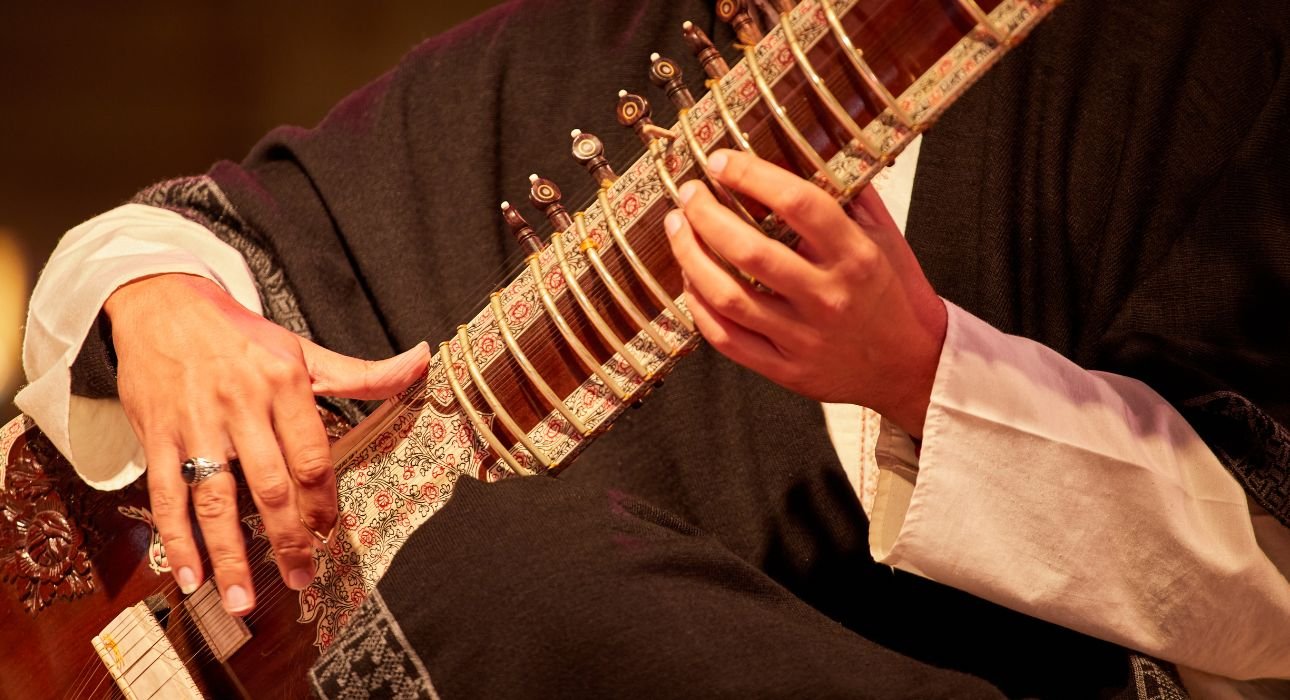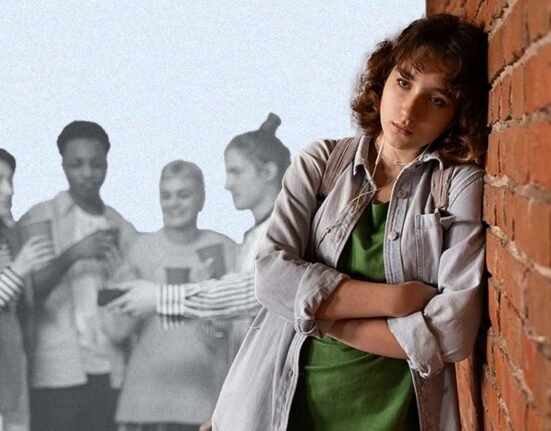On a quiet evening in a historic city, a live ensemble begins a traditional melody. As the performer hits the crescendo, Nikki feels a sudden chill run through her arms, hair standing on end, an unexpected wave of emotion flooding through her. The sensation stops her mid-breath. It’s not cold, not fear, but it’s pure connection that she feels.
That moment, when music turns into a physical experience, is what many describe as goosebumps of frisson; a skin-tingling reaction often intertwined with memory, culture and emotional resonance. While it may seem fleeting, this reaction reveals profound links between tradition, emotion and music. This article is all about the exploration of the psychology of goosebumps, understanding how they emerge, why they matter and how they bridge personal and communal experience.
Read More: The Neurobiology of Music and Emotions
Understanding of Goosebumps and its Reason
When we speak of goosebumps, technically known as piloerection, in which tiny muscles at the base of hair follicles contract, creating visible bumps on the skin (HowStuffWorks, 2024). While typically associated with cold or fear, goosebumps can also occur during powerful emotional or aesthetic experiences. When induced by music, this phenomenon is often labelled frisson, a French term that means “shiver” (Wikipedia,2025).
Neuroscientific research has shown that when music triggers goosebumps, regions of the brain linked to reward and emotion, such as the ventral striatum, amygdala and orbitofrontal cortex, activate along with measurable physiological changes (Blood & Zatorre, 2001). In one study, those who experienced chills while listening to self-selected music exhibited stronger connectivity between the auditory cortex and the emotional centres of the brain ( Sachs et al., 2016).
Read More: The Science of Sad Songs: Musical Elements That Trigger Tears
The Musical Mechanism behind the Chill
The role of Surprise and Expectation underlying many goosebump moments is a musical surprise: a sudden pause, a shift in key, a lingering silence before resolution. These moments of expectation violation trigger heightened emotional arousal. The brain anticipates one thing, receives another, creating a thrilling moment of tension and release ( Smithsonian, 2024.
Memory, Emotion and Cultural Context
Not all chills are equal. Listeners who report goosebumps often attach personal meaning or nostalgia to the music. In one exploration, songs that carried emotional weight, linked to personal history or cultural identity, were more likely to evoke goosebumps (Times of India, 2025). Therefore, the chill is not just about a chord change, but it’s about you in relation to music.
Read More: How Music Nostalgia Boosts Your Mental Health
Collective Experience and Ritual
Live performances, communal singing and shared ritual create fertile ground for goosebumps. A large-scale survey showed that the presence of others intensifies chill responses, particularly when shared listening or synchronised movement is involved (Verywell Mind, 2019). The emotional resonance becomes social, connecting the listener to the community.
Traditional Music and Shared Identity
The phenomenon spans genres and cultures. In classical raga, the moment of climax often evokes chills. In hip-hop or film music, a sudden beat drop or narrative shift can do the same. Regardless of tradition, what matters is that the musical architecture and emotional backdrop align.
Read More: The Influence of Movies and Music on Mental Health
Sacred Ritual and Emotional Elevation
In a deep chant or devotional song, participants often report chills, tears or goosebumps. This physical reaction, described in eastern tradition as Kama-Muta ( The tidal wave of compassion and connection), links individual response to communal rhythm ( The Guardian, 2016). Here, the chill becomes communal and sacred.
Folklore, Heritage and Cultural Memory
Consider a flute playing an old folk melody. The audience leans in. The music evokes childhood memories, village gatherings or ancestral ties. The chills mark this connection. The musical tradition becomes a vessel for memory, and the bodily reaction a testament to identity.
Why This Matters: Emotions, Mental Health & Social Glue
Enhanced Emotional Awareness: Experiencing goosebumps during music may reflect heightened emotional sensitivity. Studies suggest that individuals prone to musical chills report stronger emotional engagement and deeper responses to aesthetic stimuli (Sachs et al., 2016). The phenomenon thus offers a window into emotional processing and well-being.
Read More: Can Music Improve Concentration? The Psychology and Science Behind It
Music as Social Bonding
Goosebumps are not just individual rather they are shared. In group settings, synchronised emotional responses contribute to group cohesion, shared meaning and social bonding. Music that elicits chills can unite a crowd in one physical reaction; one shiver, one moment (Chabin et al.,2020)
Read More: What Does Your Music Taste Tell About Your Personality?
Technological Frontiers
In one surprising innovation, wearable sensors measured skin responses, including goosebumps to music stimuli in real time ( Gupta & Markan, 2023). As technology begins to map these emotional responses, new possibilities emerge for therapeutic or immersive experiences, but also new ethical questions about emotional privacy.
The Anatomy of the Chill: How our Brain gets involved
Auditory Cortex —-> Emotional Centre —-> Bodily Response
Neuroimaging has revealed that chills involve activation of :
- Nucleus Accumbens (reward Centre)
- Amygdala (emotional significance)
- Insula (bodily awareness )
- Auditory Cortex (Sound processing)
Neuroscience has traced a path; when a musical moment defies expectation and carries emotional resonance, the auditory cortex communicates with emotional circuits, triggering dopamine release and bodily reaction ( Blood & Zatorre, 2001). One fMRI study found that participants experiencing chills had increased blood flow in the nucleus accumbens and amygdala, areas commonly associated with reward and emotion (Blood & Zatorre, 2001).
A more recent EEG experiment revealed that chills occur on average for 8.75 seconds in duration and link to theta wave activity in the right temporal and prefrontal lobes ( Chabin et al., 2020). This body-brain connection shows that goosebumps are more than metaphor; they are neurobiological events.
Music, Context and Intentional Experience
These phenomena span genres and cultures. In classical raga, the moment of climax evokes emotional release. In modern pop or hip-hop, a beat drop or vocal gasp can spark chills. Regardless of style, what matters is surprise, meaning and shared context.
Practical Takeaway
For listeners wanting to engage the experience intentionally
- Find music you care about because emotion matters a lot.
- Listen in a quiet, immersive setting, because fewer distractions help.
- Look for that surprise moment: A key change, a pause, a sudden entry.
- Use memory; A strong tie to your past heightens impact.
- Share it; Synchronous listening or communal singing enhances the effect.
- Use in mindfulness or therapy; Recognise the chills, name them and reflect on emotion.
Conclusion
Beyond the bumps, goosebumps during music are not mere quirks, but they are signposts of meaning. The affirmation that we are listening, feeling, relating. They connect us to tradition, culture and to others. When you feel a sudden chill, remember: your body is saying yes. It’s acknowledging that you belong to a melody, memory, a moment. It’s not just sound, rather it’s self meeting society, wrapped in a shiver. So the next time your skin tingles, know that you are not just hearing the music; rather, you are living it.
References +
Blood, A. J., & Zatorre, R. J. (2001). Intensely pleasurable responses to music correlate with activity in brain regions implicated in reward and emotion. Proceedings of the National Academy of Sciences of the USA, 98(20), 11818–11823. https://doi.org/10.1073/pnas.191355898
Chabin, T., Gabriel, D., Chansophonkul, T., Michelant, L., Joucla, C., Haffen, E., … Pazart, L. (2020). Cortical patterns of pleasurable musical chills revealed by high‑density EEG. Frontiers in Neuroscience. https://doi.org/10.3389/fnins.2020.565815
Gupta, A., & Markan, C. M. (2023). Empirical measurement of the aesthetic experience of music. arXiv. https://doi.org/10.48550/arXiv.2306.07802
Smithsonian Magazine. (2024). What happens in the brain when music causes chills? Smithsonian Magazine. https://www.smithsonianmag.com/smart‑news/researchers‑look‑what‑happensbrain‑when‑music‑causes‑chills‑180959481/
Times of India. (2025, Nov 15). The weird science behind why music gives you goosebumps. The Times of India. https://timesofindia.indiatimes.com/science/the‑weird‑science‑behind‑why‑music‑gives‑you‑goosebumps/articleshow/125334214.cms
Verywell Mind. (2019). This is why you get chills while listening to your favourite song. Verywell Mind. https://www.verywellmind.com/why‑you‑get‑chills‑listening‑to‑music‑5087287/
Wikipedia. (2025). Frisson. In Wikipedia. https://en.wikipedia.org/wiki/Frisson
Blood, A. J., & Zatorre, R. J. (2001). Intensely pleasurable responses to music correlate with activity in brain regions implicated in reward and emotion. Proceedings of the National Academy of Sciences of the USA, 98(20), 11818–11823. https://doi.org/10.1073/pnas.191355898
Chabin, T., Gabriel, D., Chansophonkul, T., Michelant, L., Joucla, C., Haffen, E., … Pazart, L. (2020). Cortical patterns of pleasurable musical chills revealed by high‑density EEG. Frontiers in Neuroscience. https://doi.org/10.3389/fnins.2020.565815
Gupta, A., & Markan, C. M. (2023). Empirical measurement of the aesthetic experience of music. arXiv. https://doi.org/10.48550/arXiv.2306.07802
Smithsonian Magazine. (2024). What happens in the brain when music causes chills? Smithsonian Magazine. https://www.smithsonianmag.com/smart‑news/researchers‑look‑what‑happens‑brain‑when‑music‑causes‑chills‑180959481/













Leave feedback about this